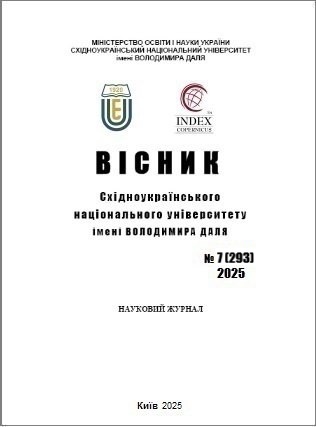Аpplication of additive technologies to restore and strengthen relevant parts of printing equipment
DOI:
https://doi.org/10.33216/1998-7927-2025-293-7-31-39Keywords:
additive technologies, 3D printing, printing equipment, part restoration, strengthening of assemblies, polymeric materialsAbstract
The article is devoted to the study of the potential application of additive technologies for the restoration and reinforcement of critical components of printing equipment. The authors analyze the effectiveness of 3D printing methods in ensuring technical reliability and accelerating repair processes. The relevance of the research is driven by the growing demand for flexible, rapid, and cost-effective solutions for restoring worn-out or unavailable parts in the printing industry. Under conditions of intensive machine operation and the absence of necessary spare parts in stock, the implementation of additive manufacturing helps minimize downtime, avoid prolonged production cycles associated with traditional casting or machining, and enhance the overall resilience of production processes. The aim of the research is to justify the effectiveness of additive manufacturing technologies for producing replacement parts for printing machines with high requirements for geometric accuracy, mechanical strength, and wear resistance, as well as to develop practical recommendations for their application. The study employed an experimental methodology that involved the fabrication of test samples from composite polymers and polyamide powder using FDM and SLS technologies. Mechanical tests for bending strength, wear resistance, and vibration durability were conducted, along with a metrological analysis of dimensional accuracy. As a result, it was established that FDM printing using composite materials allows for weight reduction of parts by up to 20% while maintaining strength comparable to traditional metal counterparts. SLS technology provides high precision (up to ±0.05 mm) and dimensional stability for components of complex geometry. The study also demonstrated that the use of advanced technologies such as Arburg Plastic Freeforming (AKF) expands the possibilities of using standard industrial granulates in 3D printing, significantly reducing material costs. Prospects for further research include improving quality standards for additive manufacturing of printing components, developing new heat-resistant composites, and implementing digital libraries of part models in the maintenance systems of printing equipment.
References
1. Torims T., Ratkus A., Pikurs G., Vedani M., Romano T., Gruber S., Lopez E., Marquardt F., Lauer H., Weinmann M., Obrados D., Delerue N., Vretenar M. Perspectives and recent achievements on additive manufacturing technologies for accelerators. Proceedings of the 14th International Particle Accelerator Conference (IPAC'23). 2023. p. 4960–4963. https://doi.org/10.18429/JACoW-IPAC2023-THPM031
2. Сідельник В. М., Зварич Н. М. Технологічність виробу у адитивному виробництві. Матеріали ХІІІ Міжнародної науково-практичної конференції молодих учених та студентів «Актуальні задачі сучасних технологій». Тернопіль, 11–12 грудня 2024 року. С. 121–122.
3. Гаращенко Я. М. Удосконалення технологічної підготовки адитивного виробництва складних виробів: монографія. Харків: НТУ «ХПІ», 2023. 388 с.
4. Поліщук А., Поліщук О., Лісевич С., Урбанюк Є., Рубанка М. Композиційні суміші на основі синтетичних полімерів і наповнювачів та обладнання для 3D-друку ними. Вісник Хмельницького національного університету. Технічні науки. 2023. № 319(1). С. 252–262. DOI: https://doi.org/10.31891/2307-5732-2023-319-1-252-262.
5. Izgin G. Implementation of Additive Manufacturing Technology. Mälardalen University, School of Innovation, Design and Engineering. 2024. 37 p. URL: http://www.diva-portal.org/smash/get/diva2:1868331/FULLTEXT01.pdf
6. Дубницький В. І., Захарченко В. І. Формування сучасного високотехнологічного промислового виробництва в межах реалізації концепції «Індустрія 4.0». Економіка та регіон. 2024. № 6. С. 10–20. DOI: https://doi.org/10.15276/ ETR.06.2024.1.
7. Лісова Р. М. Застосування адитивних технологій у виробництві та їхній вплив на бізнес-процеси. Держава та регіони. 2019. № 5. С. 123–128. DOI: https://doi.org/10.32840/1814-1161/2019-5-22/
8. Македон В. В., Холод О. Г., Ярмоленко Л. І. Модель оцінки конкурентоспроможності високотехнологічних підприємств на засадах формування ключових компетенцій. Академічний огляд. 2023. № 2 (59). C. 75-89. DOI: 10.32342/2074-5354-2023-2-59-5.
9. Duncan B.P., Smith M.A. Practical application of additive manufacturing for extreme environments. MRS Communications. 2025. Vol. 15. P. 81–89. https://doi.org/10.1557/s43579-024-00682-w
10. Коротков С. С., Кузьміч І. Б., Лащевська Н. О., Волошин В. В. Інтеграція камери в систему FDM-друку для покращення якості друку. Телекомунікації та інформаційні технології. 2024. № 1. С. 45–52. DOI: https://doi.org/10.31673/2412-4338.2024.049908.
11. Wilson S., Thomas R., Mary N., Bosco E. T., Gopinath A. Development and fabrication of fused deposition modelling 3D printer. IOP Conference Series: Materials Science and Engineering. 2021. 1132. 012019. https://doi.org/10.1088/1757-899X/1132/1/012019
12. Kepka M., Zetek M., Zetková I., Bakir Y. Applications of additive technologies in the maintenance of machinery and equipment. Procedia Structural Integrity. 2024. Vol. 54. P. 59–66. https://doi.org/10.1016/j.prostr.2024.01.056.
13. Formlabs. What is selective laser sintering (SLS)? Formlabs. URL: https://formlabs.com/global/blog/ what-is-selective-laser-sintering/?srsltid= AfmBOop_BBDUx0geDz1bIUfIuEgHT62np_y9T3MMC-LAiIxUzsHBTwuz (дата звернення: 10.07.2025).
14. Мейта Д. Р., Лашина Ю. В. Порівняння адитивних та субтрактивних технологій виготовлення металевих деталей. Інновації молоді в машинобудуванні. 2021. № 3. DOI: https://doi.org/10.20535/2708-3926.2021.3.231654.
15. Македон В. В., Байлова О. О. Планування і організація впровадження цифрових технологій в діяльність промислових підприємств. Науковий вісник Херсонського державного університету. Серія «Економічні науки». 2023. Випуск 47. C. 16-26. DOI: 10.32999/ksu2307-8030/2023-47-3.
16. Stratasys. Офіційний вебсайт. URL: https://www.stratasys.com/en/ (дата звернення: 10.07.2025).
17. ARBURG. Офіційний вебсайт. URL: https://www.arburg.com/en/ (дата звернення: 10.07.2025).
18. Павленко П. М. Цифрові двійники адитивних технологій в металообробних галузях промисловості. У: Комплексне забезпечення якості технологічних процесів та систем – 2024: матеріали науково-практичної конференції (м. Чернігів, 2024). Чернігів: НУ «Чернігівська політехніка», 2024. С. 139–141.
19. Makedon V., Myachin V., Plakhotnik O., Fisunenko N., Mykhailenko O. Construction of a model for evaluating the efficiency of technology transfer process based on a fuzzy logic approach. Eastern-European Journal of Enterprise Technologies. 2024. no 2(13(128)). p. 47-57. https://doi.org/10.15587/1729-4061.2024.300796.

